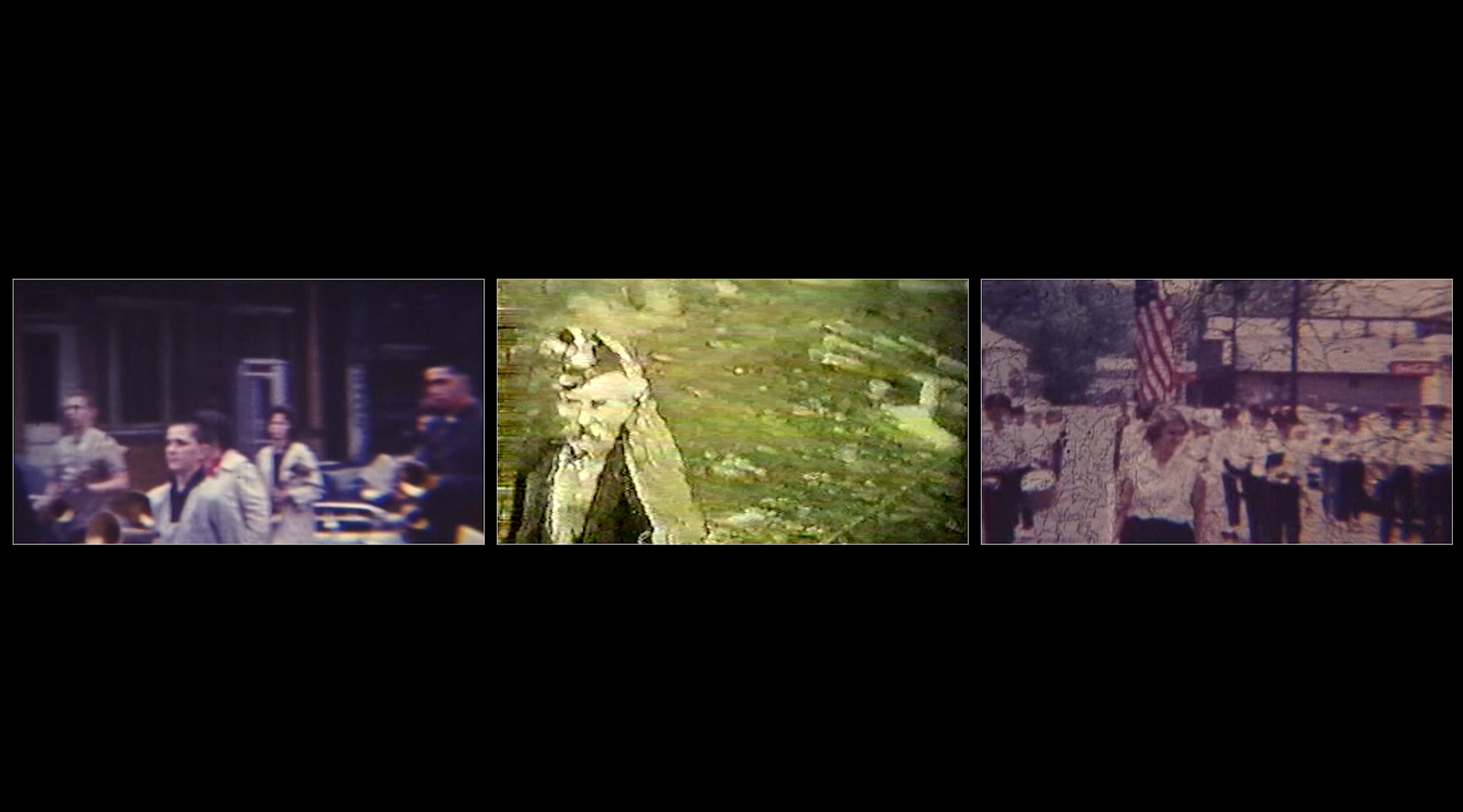SHAWNEE REVISITED (2018)
3-channel video, 2-channel audio | 22 minute loop
Shawnee Revisited is a counterpart to the album and music performance Shawnee, Ohio. Carleton College’s Weitz Center for Creativity commissioned and premiered the installation. Both projects evoke the sonic and visual world of the town, and Shawnee Revisited remixes the same material to make an environment of stillness and movement, where present and past bleed into one another. Here, participants can address, imagine, and enact a new future for Shawnee and rural communities across the country.
Gallery view, left and center screens.
Shawnee is a small 19th century coal mining town in rural Appalachian Ohio. Shawnee’s history includes labor struggles, economic depression, and environmental degradation and recovery. Now, fracking is the latest iteration of this boom and bust cycle. Residents find themselves caught between fighting for jobs and fighting for clean water.
Walking into the space, participants experience contemporary footage of Shawnee: quiet streets, a local opera house, and still interiors that invite slowness and contemplation. The images appear to be photographs, yet when more time is spent with them, more is seen: trees gently sway, summer heat radiates through the air, a cobweb waves in the wind, a flag moves, a sign reflects sunlight. Standing in the darkened gallery with these images feels as if you are standing in Shawnee, in these places, in the opera house looking out onto the street and surrounding forest.
The images are met with sudden transitions into the past, creating a slowly unfolding montage between contemporary films and archival and home movies. Stop the motion of this archival footage at any point and a world of visual noise, sunbursts, cracks, and film deterioration is revealed; the film’s own history is recorded alongside the people and places it depicts.
A view inside the gallery.
On the two side screens, seasons transition––of landscapes, parades, portraits, and social life––while mining remains ever-present in-between. The earliest footage is of miners exiting from their underground work (reminiscent of the Lumière brothers’ famous films of workers leaving a factory), and of their carbide-lighted hats slowly dancing in the darkened mines. Above ground, children move in parallel motion to the miners, parading down main street for Halloween or the Fourth of July or Memorial Day: side-by-side rituals marking the change of time, the environmental and economic costs of extraction, the entwined patterns and rhythms of culture and labor.
Throughout, sound unfolds as a background of instrumental long tones gradually shifting and evoking the forest that is always present, surrounding Shawnee and nearby towns. Some of these sounds were recorded in the very places that viewers see in the Shawnee footage, further blurring past and present. We also hear the voices of local residents, speaking and singing of work, friendship, disaster, and death. Together, these voices and sounds create a sonic world that place past and present together, offering ways to understand and change how to move into the future.
A still from Shawnee Revisited.
A still from Shawnee Revisited (2018).
Gallery view, center and right screens.
Credits:
Musicians: Aaron Michael Butler, vibraphone; Jocelyn Hach, viola; Anna Roberts-Gevalt, violin; Katie Porter, bass clarinet; Paul de Jong, cello; Jeremy Woodruff, saxophone and flute; Brian Harnetty, piano and field recordings
Videographer: Jon Johnson
Archival films: courtesy of Jack Shuttleworth
Archival recordings: courtesy of the Little Cities of Black Diamonds Archives, and the Anne Grimes Collection in the Library of Congress
This project was commissioned by Carleton College, and funded in part through a Creative Capital Award
Special thanks to Steve Richardson, Paul Bernhardt, and Kate Nordstrum






